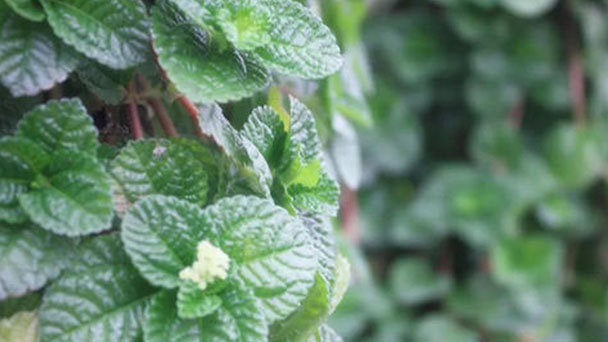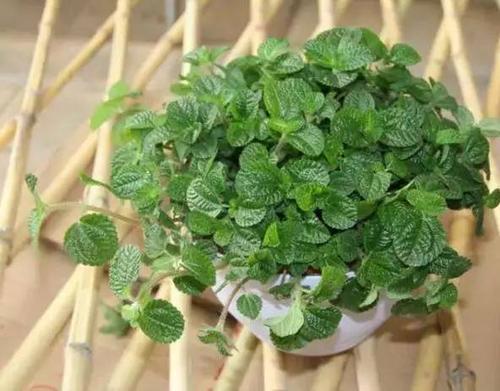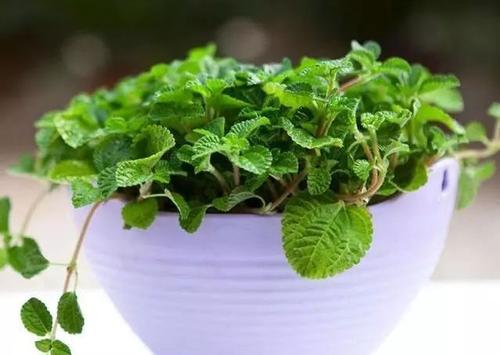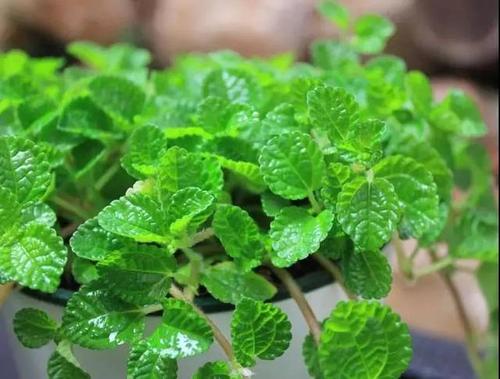Lemon balm (Melissa Officinalis) profile
Written by Maggie
Mar 23 2021

Lemon balm (Melissa Officinalis), also known as balm, common balm, or balm mint, is native to the Mediterranean coast, can be found in Europe, Central Asia, North America, Asia, mainly in France.
Lemon balm, a perennial herb of the lamiaceae, is resistant to cold, shade, drought, and pruning. It can withstand low temperature below 0°C, summer temperature above 30°C growth is limited, the most suitable growth temperature between 10-20°C. Plant height is about 50 cm, stem and leaves with a soap fragrance, round umbel type inflorescence, lip shape pale pink purple flowers. Lemon balm is easy to propagate and can be sown, cutted and divided.
Lemon balm picture

Morphological characteristics of lemon balm
Lemon balm, 50 cm in height, with soap-scented stems and leaves, round umbels, lipped pinkish purple flowers. Lemon balm is heat and cold resistant, drought and waterlogging resistant, also resistant to pruning. Trim once before the beginning of winter, can be safe over winter. In winter Lemon balm can withstand low temperature below 0°C, summer temperature above 30°C growth is limited, the most suitable growth temperature between 10-20°C. Lemon balm is easy to propagate and can be sown, cutted and divided.
Lemon balm is a hardy plant that stays green even in sub-zero temperatures. It is very popular with bees, the light green leaves are very beautiful, a rub will smell like a lemon fragrance. Like lemon fragrance, it can remove headache, abdominal pain, and toothache. And help treat bronchitis and digestive diseases.
The ecology of lemon balm
Lemon Balm is resistant to heat, cold and shade, drought, waterlogging and pruning. In winter it can withstand the low temperature below 0℃, summer temperature above 30℃ growth is limited, the most suitable growth temperature is between 10~20℃. Trim once before the beginning of winter, can be safe over winter. Lemon Balm can be easily propagated by sowing, cutting and splitting. Plant height 50 cm, stem and leaves with soap fragrance, wheel umbels, lip white flowers, heat and cold resistance, drought and flood resistance.
Balm mint is strong, more heat-resistant than other herbs and has more moisture in the soil so that the roots do not rot. Because the seed is good optical activity, it does not need to be covered with soil after sowing, and the germination rate is about 50%. Cuttage to the top bud 5 cm long as the material cut 5 inserted in a clean medium is very easy to survive, about 2 ~ 3 weeks can be transplanted, but must pay attention to the bee grass leaves thin, must often water to maintain humidity and shading 50%, otherwise also too late hair roots cuttings have dried dead. The rule of planting is that it is easy to root out the parts of the plant where the stem touches the ground.
How to grow and care for lemon balm
Watering
Every 3-5 days with fresh water or rice water can be irrigated. If the leaves withered due to lack of water immediately add water, and will soon recover. Supplement nutrient solution can be commonly used plant nutrient solution.
Trim
Lemon balm grows quickly, so it is recommended to trim it once a week. Remove the upper branches where new leaves have grown. If there are black edges or old leaves at the root, do not worry. (Slow growth in winter, prune as little as possible, and place in a sunny place after pruning)
Ventilation
If the room is well lit, Lemon Balm can be placed in a sunny area with normal ventilation. In the case of a Lemon balm, the Lemon balm is kept in the bathroom or kitchen for 72 hours, then moved to a sunny area and returned to the room for 72 hours or more. When the weather is not cold, it can also be placed outside the house to absorb light and breathe.

The sun
Balm mint likes bright light. If the room is well-lit, Balm mint can be placed in a sunny place with normal ventilation. In the case of a Balm mint, the Balm mint is kept in the bathroom or kitchen for 72 hours and then removed to a sunny area. Then the Balm mint is returned to the room for 72 hours or more. When the weather is not cold, it can also be placed outside the house to absorb light and breathe.
Temperature
Balm mint culture does not require high temperature. It can tolerate low temperatures below 0℃ in winter, but its growth is limited by high temperature above 30℃ in summer. The most suitable growth temperature is between 10 ℃ and 20℃.
The distribution of lemon balm
Lemon Balm is native to the southern coast of the Mediterranean Sea in Europe. It can be found in Europe, Central Asia, North America and Asia, and is mainly produced in France.
Function and use of lemon balm
Balm mint can increase appetite, promote digestion
Fresh and sweet taste, Balm mint is suitable for cold and sweaty summer drinking, can increase appetite, promote digestion, before and after meals. As an alternative to lemon flavoring, the lemon flavor of Bee Bee grass is the most appetizing, but it lacks the acidity of lemon. It is suitable to be added to a variety of dishes and desserts. Like lemon fragrance, Balm mint can remove headache, abdominal pain, toothache, have the effect of pain relief, respiratory diseases, stable mood;And help treat bronchitis and digestive diseases.
Specially absorb toxic and harmful gases in the indoor air
Such as: formaldehyde, radon, benzene, ammonia, sulfur dioxide, and smoke smell, odor, carbon dioxide. Release anion fast, disinfection and sterilization. One big basin is placed inside every 10 to 15 square metre, every 8 square metre is placed a small basin, bridal chamber, new furniture is being decorated after, open new furniture door, drawer, the meeting after 72 hours has eliminated obvious feelings.

Latest Updated
- Benefits of Bugleweed - 7 Science-backed Health Benefits
- Bugleweed Dangers & Side Effects - Is It Poisonous?
- How to Plant Evergreen Trees - What You Should Know
- When to Plant Evergreens - Grow Guide for Evergreen Trees
- 12 Wonderful Evergreen Shrubs for Your Garden
- 12 Popular Evergreen Plants with Pictures for Beginners
- When And How To Prune A Lilac Bush Like a Pro
- How to Grow & Care for Lilac Vine (Hardenbergia Violacea)
- Japanese Lilac Tree (Syringa Reticulata) Care & Propagation Guide
- Shumard Oak Pros and Cons - What to Know
Popular Articles
- Winter maintenance of Antirrhinum Majus
- How to Grow Terminalia Mantaly Tree
- How to Grow and Care for Crossostephium Chinense
- How to grow Antirrhinum Majus in spring
- Peristeria Elata (Dove Orchid) Profile: Info & Care Guide
- Underwatered Snake Plant (Sansevieria Trifasciata) - Signs And How To Fix
- How to Care for Brazilian Jasmine Plant (Mandevilla Sanderi)
- How to Grow & Care for Graptopetalum Purple Delight in Summer
- Rosa Chinensis (China Rose): Plant Growing & Care Tips
- How to Care for Baby Sun Rose (Aptenia Cordifolia)